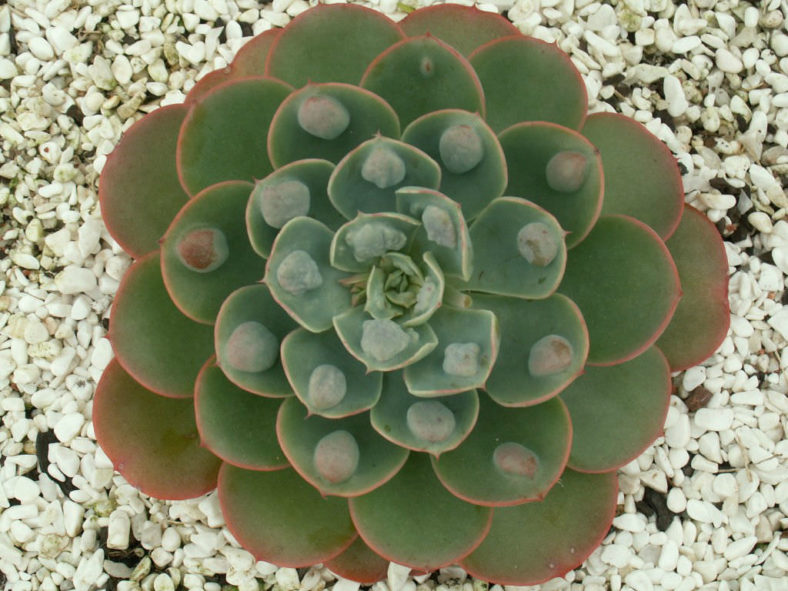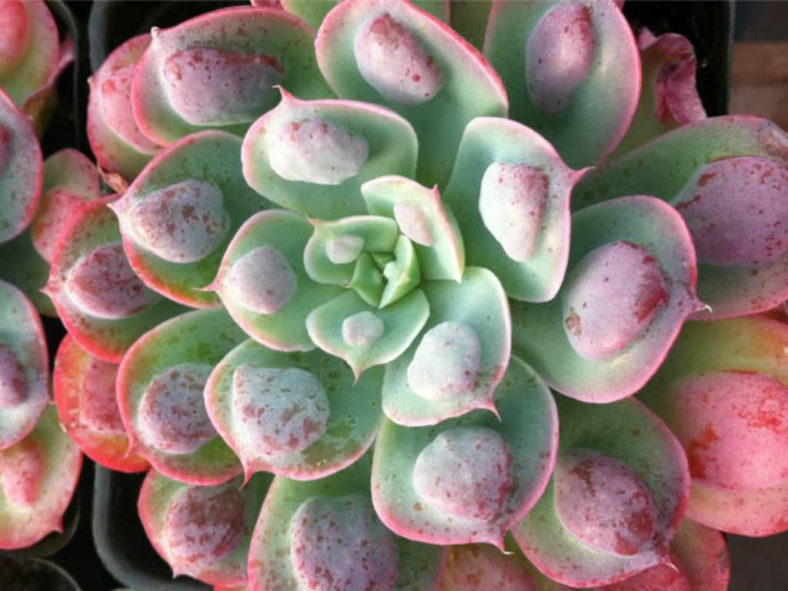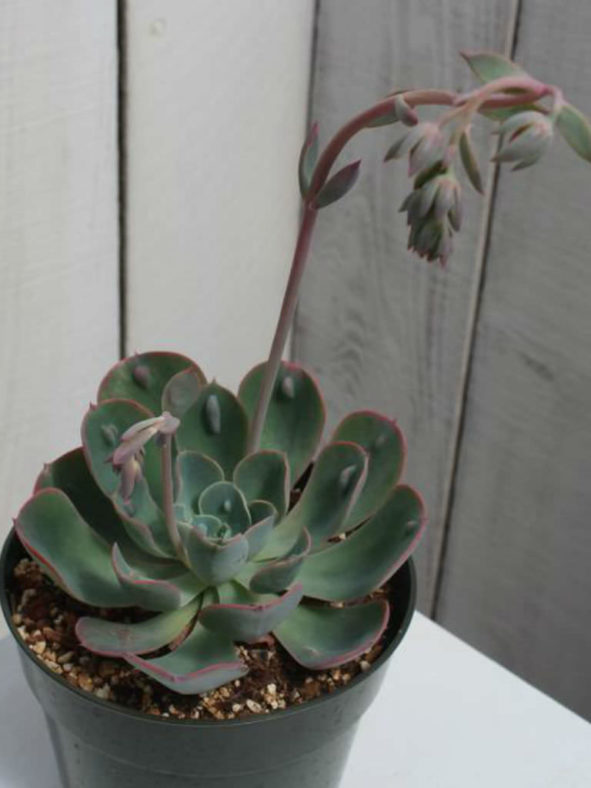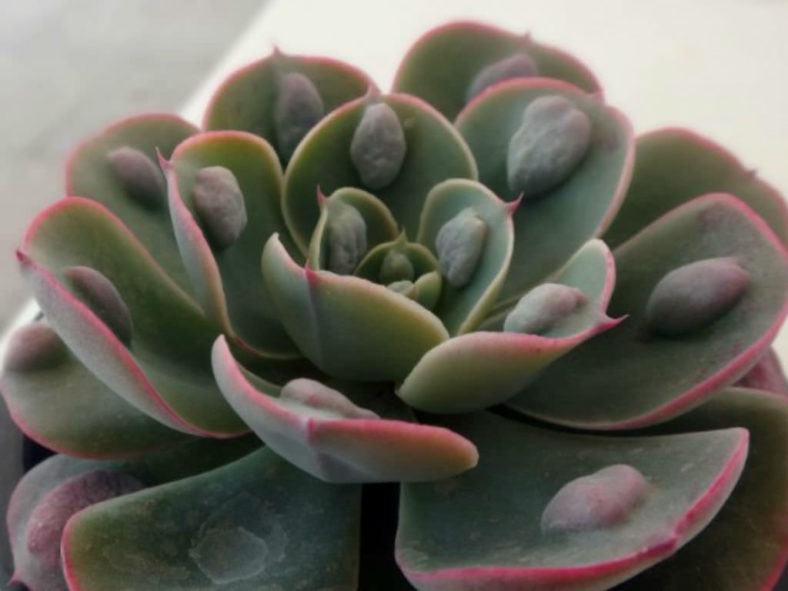Scientific Name
Echeveria 'Rain Drops'
Common Name(s)
Raindrops Echeveria
Synonym(s)
Echeveria 'Raindrops'
Scientific Classification
Family: Crassulaceae
Subfamily: Sempervivoideae
Tribe: Sedeae
Genus: Echeveria
Origin
Echeveria 'Rain Drops' is a Dick Wright hybrid, noted as the smallest of the bumpy-leafed Echeverias. Unfortunately, according to Jocelyn Ainsworth, Dick Wright distributed several, more or less resembling seedlings from the same batch as Echeveria 'Rain Drops' in the years. Although those quite similar may be called Echeveria 'Rain Drops', two fairly different forms have been given new names: Echeveria 'New Heights' and Echeveria 'Heart's Delight'. This hybrid has also been tissue-cultured.
Description
Echeveria 'Rain Drops' is a small succulent that forms a rosette of pale green, spoon-shaped leaves with reddish margins and a spherical, blue-green bump near the tip. The rosette can grow up to 6 inches (15 cm) in diameter, usually solitary, but may form a few offsets as it matures. Not all young specimens have bumps, but they will develop with time.
The bell-shaped flowers are pinkish on the outside and yellow on the inside. They appear on branched stalks that rise well above the rosette in summer.

How to Grow and Care for Echeveria 'Rain Drops'
Hardiness: USDA hardiness zones 9b to 11b: from 25°F (-3.9°C) to 50°F (10°C).
Most common Echeveria species are not complicated succulents to grow, provided you follow a few basic rules. First, never let water sit in the rosette, as it can cause rot or fungal diseases that can kill the plant. Additionally, remove dead leaves from the bottom of the plant as it grows. These dead leaves provide a haven for pests, and Echeverias are susceptible to mealybugs. Finally, as with all succulents, maintaining careful watering habits and providing ample light will help ensure success.
Repot as needed, preferably during the warm season. To repot a succulent, ensure the soil is dry before repotting, then gently remove the pot. Knock away the old soil from the roots, removing any rotted or dead roots. Treat any cuts with a fungicide.
Most Echeverias can be easily propagated from leaf cuttings, although a few are better propagated from seeds or stem cuttings. To propagate a leaf cutting, place the individual leaf in potting soil for succulents and cover the dish until the new plant sprouts.
Learn more at How to Grow and Care for Echeveria.
Links
- Back to genus Echeveria
- Succupedia: Browse succulents by Scientific Name, Common Name, Genus, Family, USDA Hardiness Zone, Origin, or cacti by Genus
Photo Gallery
Click on a photo to see a larger version.


